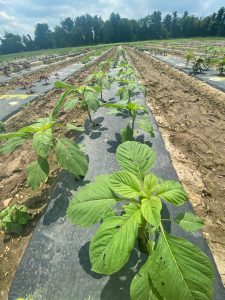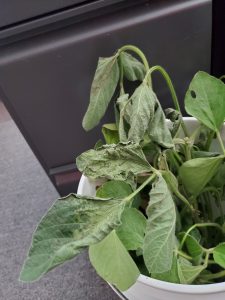
Image by Jacques Gaimard from Pixabay
by Julie Kikkert, Cornell Cooperative Extension, Cornell Vegetable Program
(Reprinted with permission from Cornell VegEdge Newsletter Vol. 17 (14), July 14, 2021, CCE Cornell Vegetable Program, Canandaigua, NY.)
Scaring birds out of sweet corn and other crops is not new, based on the centuries-old placement of scarecrows dressed in old clothes (oftentimes filled with straw) in fields. However, there are many newer methods from chemical control to loud noises, to laser beams. There are pros and cons to each method and varied costs as well. [Read more…]

 New Jersey vegetable growers are invited to join Dr. Jim Simon, New Use Crop Specialist, and PhD Student Tori Rosen for a twilight visit to their Amaranth “Tropical Spinach” field trials. Participants will help select amaranth varieties of interest for use as leafy greens at the Rutgers Horticultural Farm III, 67 Ryders Land, East Brunswick, NJ on Thursday, July 22, 2021 and Friday, July 23, 2021, 5:30-7:30pm both days. Please RSVP for Thurs or Fri through this link:
New Jersey vegetable growers are invited to join Dr. Jim Simon, New Use Crop Specialist, and PhD Student Tori Rosen for a twilight visit to their Amaranth “Tropical Spinach” field trials. Participants will help select amaranth varieties of interest for use as leafy greens at the Rutgers Horticultural Farm III, 67 Ryders Land, East Brunswick, NJ on Thursday, July 22, 2021 and Friday, July 23, 2021, 5:30-7:30pm both days. Please RSVP for Thurs or Fri through this link: If irrigating pay particular attention for signs of salt buildup.
If irrigating pay particular attention for signs of salt buildup. 